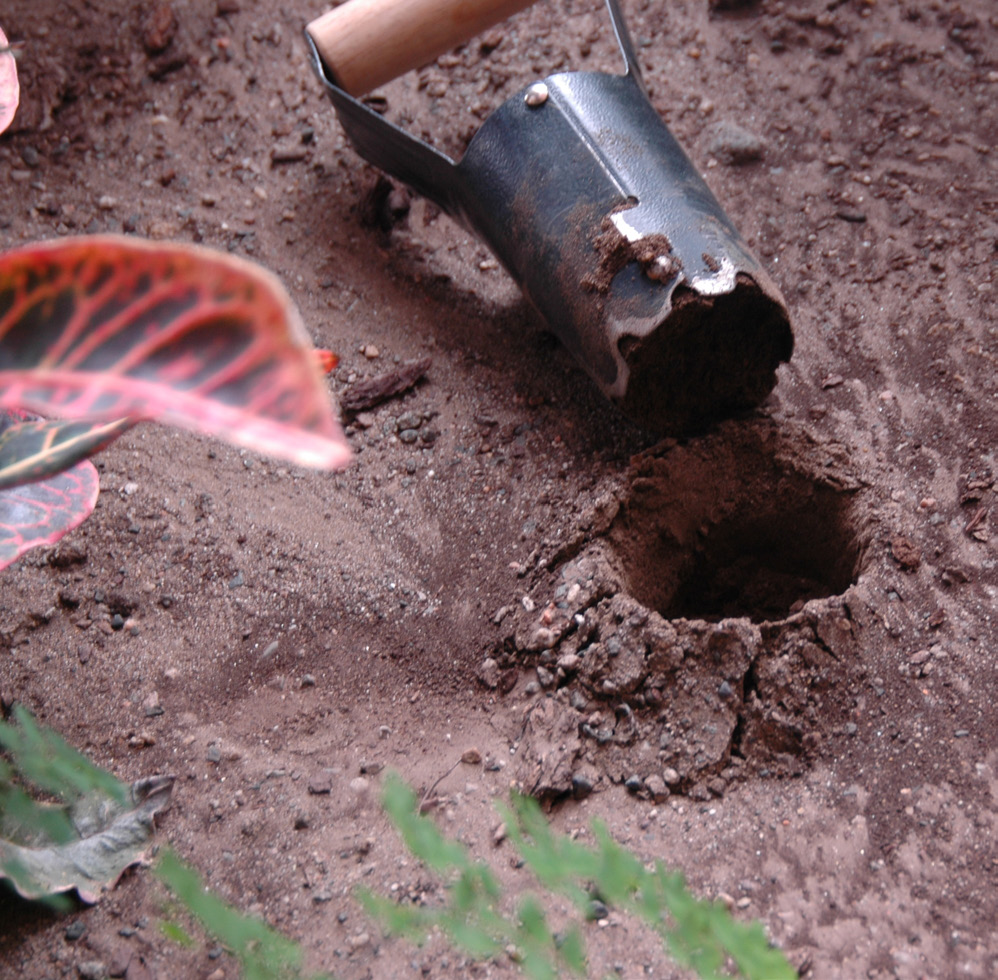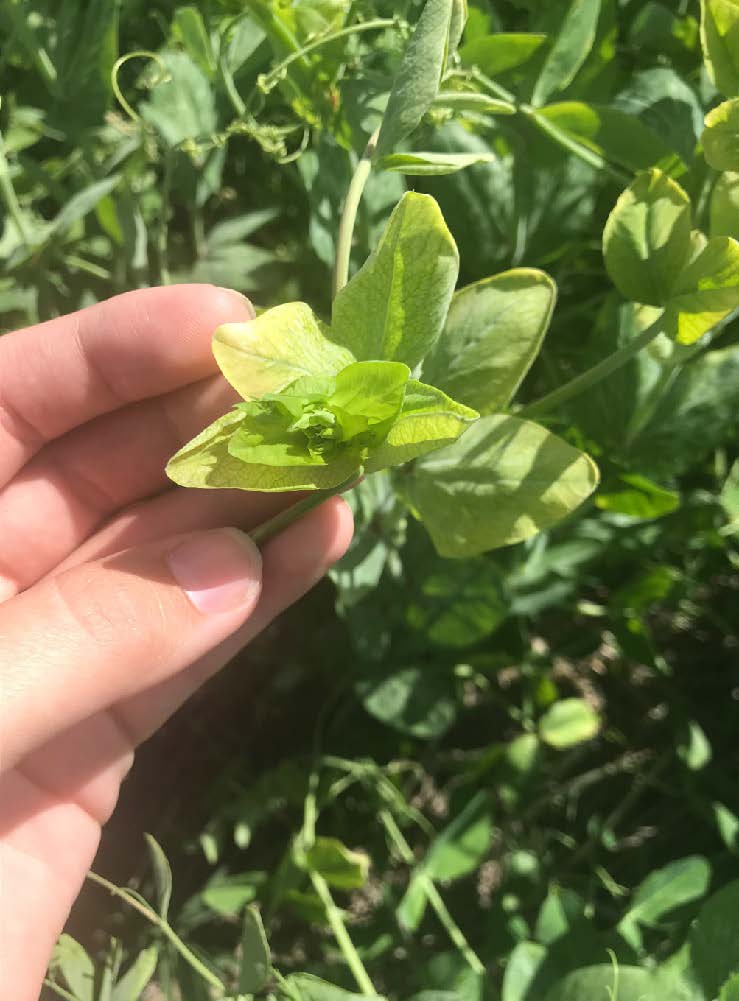Home Garden Soil Testing and Fertilizer Guidelines
Having the right levels of nutrients in the soil helps a garden thrive. Plants struggle when soil nutrients are too low or high, leading to deficiencies or toxicities. Although it is often thought that “more is better,” excess additions of fertilizer, manure, compost, or other amendments can be costly and harm the environment. Indiscriminately adding fertilizer or amendments may fail to solve problems or even make them worse.
Soil testing allows gardeners to determine what, if any, nutrients are deficient so they can identify the root cause of a struggling garden and create a well-informed fertilizing plan. Once a deficiency affects plants, it’s often too late to correct the problem, so soil testing before planting is important. Once plants begin growing, certain nutrient deficiencies can be identified visually with charts on MSU’s soil fertility website (landresources.montana.edu/soilfertility/nutrientdeficiency.html), but soil testing is still necessary to determine fertilizer needs. Testing every three to four years is recommended, or more frequently if poor growth or deficiency symptoms are observed.
How to Sample
Sampling when soil is workable in the early spring is best because results will most accurately reflect the nutrients available for plant uptake in the garden. Nutrient levels can change throughout the year with temperature and as plants and soil microbes use them, especially nitrogen, which is released from organic matter even in winter months in a process called “mineralization.” Wet conditions also leach nitrogen and sulfur from the soil. Fall is the next best sampling time as it is more convenient and can still be accurate when winters are cold and dry, and mineralization and leaching are expected to be minimal. Plan soil sampling to allow adequate time for soil analysis (one to two weeks) and application of fertilizers or amendments, if needed.

Photo: Rose Wallander
A bulb planter used to collect a soil sample.
Collect at least 10 samples per garden (up to 1,000 square feet) of equal volume from throughout the garden area. Consider collecting a separate set of samples for different areas or soil types. Use a hand probe, auger or bulb planter to sample the top six inches of soil after removing any mulch or sod. Bulb planters can be bought at local garden stores, and many MSU Extension offices can lend out a hand probe or auger. Shovels are not ideal, but can be used, because it is difficult to obtain an equal volume of soil among samples and across soil depths. Clean tools before and between each set of samples to prevent contamination.
Once you have samples, mix them together, and immediately dry a pint-sized subsample, disposing of the remainder. Nutrient levels in soil samples can change significantly if soil sits around before drying, ruining test results. Soil can be dried by spreading it on paper plates before shipping to the laboratory.
Lists of regional laboratories can be found at landresources.montana.edu/soilfertility/html/SoilTestLabs.html or contact the local Extension agent for recommendations. At a minimum, have the laboratory test for nitrate-N (nitrogen), Olsen P (phosphorus), K (potassium), OM (organic matter), soluble salts and pH. Soil texture testing can be useful but costs more and requires more soil. Soil texture can also be tested at home with a “mason jar test,” at landresources.montana.edu/soilfertility/documents/PDF/SoilTextureJarTest.pdf.

Photo: Clain Jones, MSU Extension
An iron-deficient pea plant.
Fertilizing Guidlines
Soil test results should provide both a concentration (e.g. “5 ppm”) and “nutrient classes” indicating whether a nutrient level is low, medium (moderate) or high (adequate). If a result is above the “critical level,” then that nutrient is sufficient for the garden’s needs. If it is below the critical level (low to moderate), fertilize (Table 1). The optimal pH range for most garden plants is between pH 5.8 and 6.5, but vegetables do relatively well in Montana’s typical pH levels of 7 to 8.
| Olsen P | Nutrient Class | Gardens | Lawns | Trees/Shrubs |
| ppm | lb P2O5/1000 sq ft | |||
| < 4 | Very low | 5 | 3 | 3 |
| 4 - 8 | Low | 4 | 2 | 2 |
| 8 - 12 | Medium low | 3 | 1 | 1.5 |
| 12 - 16 | Medium | 2 | 0 | 1 |
| 16 - 30 | High | 1 | 0 | 0 |
| > 30 | Very high | 0 | 0 | 0 |
Table 1. Phosphorus nutrient class and fertilizer guidlines based on soil tests.
Some laboratories provide fertilizer rate recommendations with results, but these may not be tailored to Montana gardens. Tables with MSU fertilizer guidelines for each nutrient can be found in MSU Extension’s MontGuide MT200705AG, Home Garden Soil Testing and Fertilizer Guidelines (store.msuextension.org/publications/yardandgarden/MT200705AG.pdf). For example, if garden soil has a phosphorus level of 7 ppm, the recommended fertilizer rate is three pounds of phosphorus fertilizer (P2O5) per 1,000 square feet (Table 1).
Garden fertilizers have different blends of nutrients, or “grades.” The fertilizer grade is the set of three numbers on a fertilizer bag that state the percentage of nitrogen, phosphorus, and potassium (N-P2O5-K2O) in the fertilizer. So, if a 1,000 square foot garden needs three pounds of phosphorus, it would need an application of more than three pounds of a fertilizer mix. For example, with a 20-20-20 fertilizer grade, the garden would need an application of 15 pounds of fertilizer to meet a three pounds of phosphorus per 1000 square foot recommendation (Table 2). The MontGuide Home Garden Soil Testing and Fertilizer Guidelines provides a handy conversion table for the most common fertilizer grades and nutrients.
|
Fertilizer Grade |
Pounds actual P2O5/1000 sq ft | ||
| 1 | 2 | 3 | |
| N–P2O5–K2O | lb fertilizer/1000 sq ft | ||
| 5–10–10 | 10 | 20 | 30 |
| 8–5–5 | 20 | 40 | 60 |
| 17–17–17 | 6 | 12 | 18 |
| 20–20–20 | 5 | 10 | 15 |
| 30–3–3 | 33 | 67 | 100 |
Table 2. Amount of fertilizer mixes needed to match phosphorus fertilizer guidelines.
|
For questions about soil testing or fertilizer guidelines, contact Clain Jones at [email protected] or 406-994-6076 or your local MSU Extension agent. Find MSU Extension soil fertility resources at landresources.montana.edu/soilfertility For more information on soil testing, landresources.montana.edu/soilfertility/documents/PDF/sscoop/SoilTestQsSS.pdf |
Clain Jones is the MSU Extension Soil Fertility Specialist in the Department of Land Resources and Environmental Sciences.
